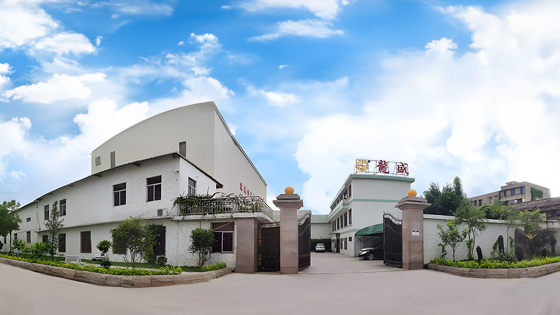How to choose the right lubricant for a non-woven fabric bag making machine?
Release time: 2025-04-21 16:57:15.787
Non-woven bag making machines require lubricating oil for maintenance. How should the lubricant for non-woven bag making machines be selected? If the lubricant only needs internal lubrication, the selection is simple. However, in most cases, it is best to adjust the internal and external lubrication to a certain degree.
Nonwoven bag making machines require lubricants for maintenance and repair. How should lubricants for nonwoven bag making machines be selected? If a lubricant only requires internal lubrication, the selection is simple. However, in most cases, it is best to adjust the internal and external lubrication to a certain degree.
The internal and external lubrication functions of a lubricant are determined by its chemical composition, polarity, and solubility in the polymer melt. For example, monoglyceride stearate is soluble in polyvinyl chloride melt and has partial internal lubrication. Its internal lubrication function comes from the two polar hydroxyl groups in the molecule; while glyceryl tristearate only has external lubrication function because it has no hydroxyl groups in its molecule. Of course, the lubrication function is also affected by impurities and other additives in the lubricant.
There are many types of lubricants used for plastics in nonwoven bag making machines, ranging from natural substances such as brown coal wax, paraffin wax, mineral oil, and animal and vegetable oils to various low-molecular-weight polymers such as low-molecular-weight fluoropolymers, silicone oils, and low-density polyethylene. Commonly used are some aliphatic compounds, such as stearic acid, stearic acid soaps, fatty acid esters, and amide compounds.
In 1981, the United States consumed tens of thousands of tons of lubricants in plastic processing, with amides accounting for 45%, stearic acid and its derivatives accounting for 35%, and wax compounds following. Some lubricants, such as oleic acid amide, stearamide, and metal salts of fatty acids (such as cadmium stearate), are also excellent anti-blocking agents. Adding only 0.5% of lubricant to a nonwoven bag making machine can result in excellent smoothness of the film. Of course, fillers such as silicon dioxide and clay are also commonly used anti-blocking agents, with an amount of 0.1-1.0%, and they are often called opening agents.
Related news
The adhesive layer of the bag-making machine affects the porosity of the material!
The non-woven fabric three-dimensional bag making machine works quickly, the sealed edges do not crack, do not damage the edges of the fabric, and there is no burr or curling phenomenon. At the same time, ultrasonic bonding effectively avoids the fiber degradation caused by heat bonding, the adhesive layer of the bag making machine affects the porosity of the material, and causes delamination after receiving the impact of liquid. The ultrasonic bonding equipment mainly consists of an ultrasonic generator and a roller. The main components of the ultrasonic generator are a horn, a power supply and a transformer.
Basic Principles of Bag Making Machines
A bag-making machine is a multi-machine linkage, multi-station automated equipment. It can produce various shapes of packaging bags through longitudinal and transverse sealing technologies. The working principle of the bag-making machine is: the roll film that has been processed through printing, lamination, slitting, and cutting processes is heated, sealed, cut, and rewound into bags under the action of a bag-shaped mold.
How many types of bag-making machines are there?
Equipment specifically designed for manufacturing paper bags, suitable for packaging needs in the food, pharmaceutical, and cosmetic industries. For example, paper bag machine brands such as Nanjiang, Shenzhien, and Yasen all offer high-performance paper bag making equipment.
Development Trends and Applications of Bag Making Machine Technology
A bag-making machine is a machine used to create various types and sizes of bags, including plastic bags, paper bags, and non-woven fabric bags. Bag-making machine technology has continuously developed and improved over the past few decades. Early bag-making machines mainly used mechanical drive methods, resulting in low production efficiency and poor bag quality. Later, the development of electronic technology brought new opportunities, and bag-making machine technology was also improved.
About Us
Products
Quick Navigation
COOKIES
Our website uses cookies and similar technologies to personalize the advertising shown to you and to help you get the best experience on our website. For more information, see our Privacy & Cookie Policy
COOKIES
Our website uses cookies and similar technologies to personalize the advertising shown to you and to help you get the best experience on our website. For more information, see our Privacy & Cookie Policy
These cookies are necessary for basic functions such as payment. Standard cookies cannot be turned off and do not store any of your information.
These cookies collect information, such as how many people are using our site or which pages are popular, to help us improve the customer experience. Turning these cookies off will mean we can't collect information to improve your experience.
These cookies enable the website to provide enhanced functionality and personalization. They may be set by us or by third-party providers whose services we have added to our pages. If you do not allow these cookies, some or all of these services may not function properly.
These cookies help us understand what you are interested in so that we can show you relevant advertising on other websites. Turning these cookies off will mean we are unable to show you any personalized advertising.
Contact Us
Shantou yongshun packing machinery Co.,Ltd.
Address: No. 1, Mianhua School Qian Road, Ha Giang District, Shantou City, Guangdong Province
Postcode: 515073
Tel: 86-754-88224688
Fax: 86-754-88114699
Email: ysjx@ysjx.cn

Mobile Website

Service Number




